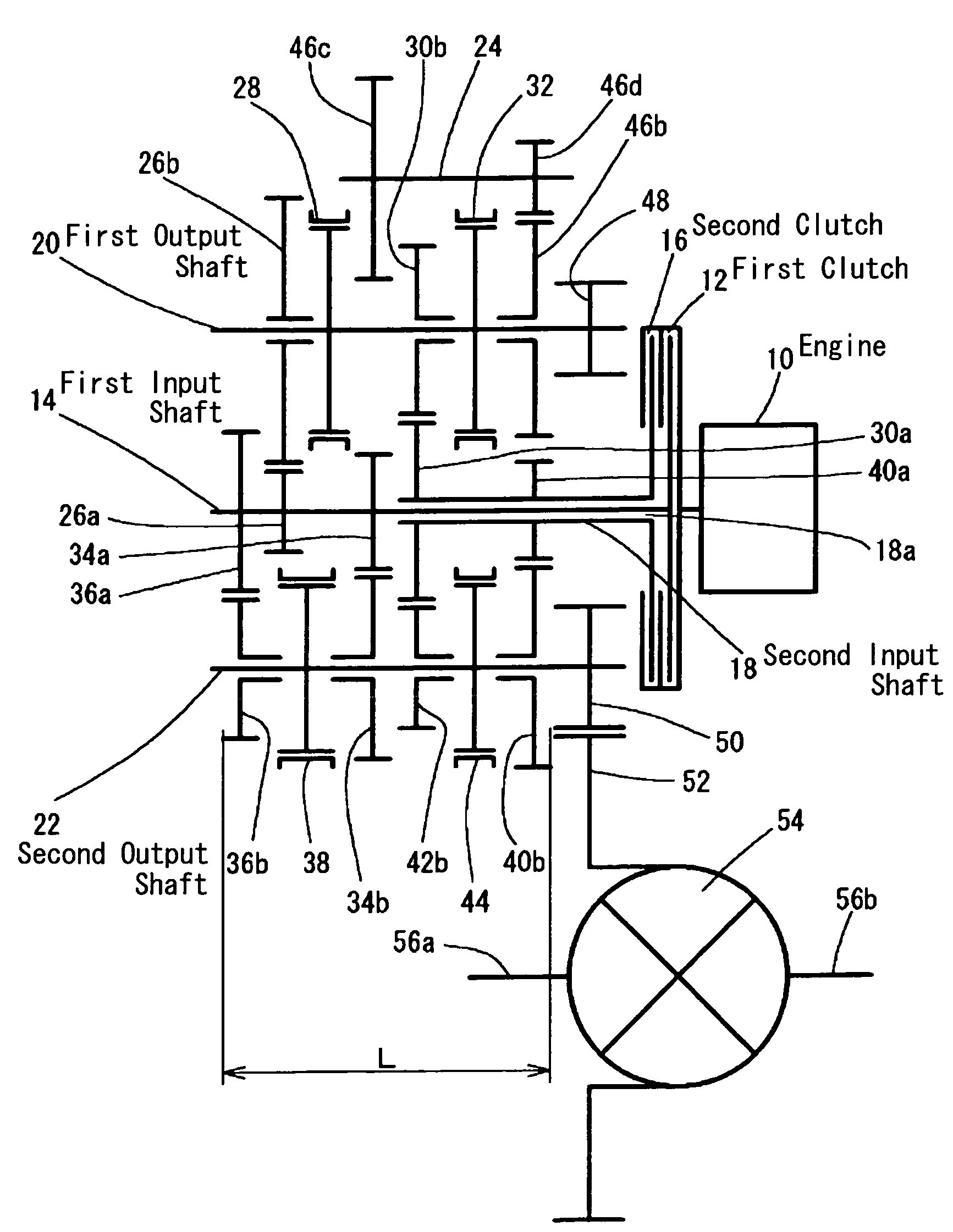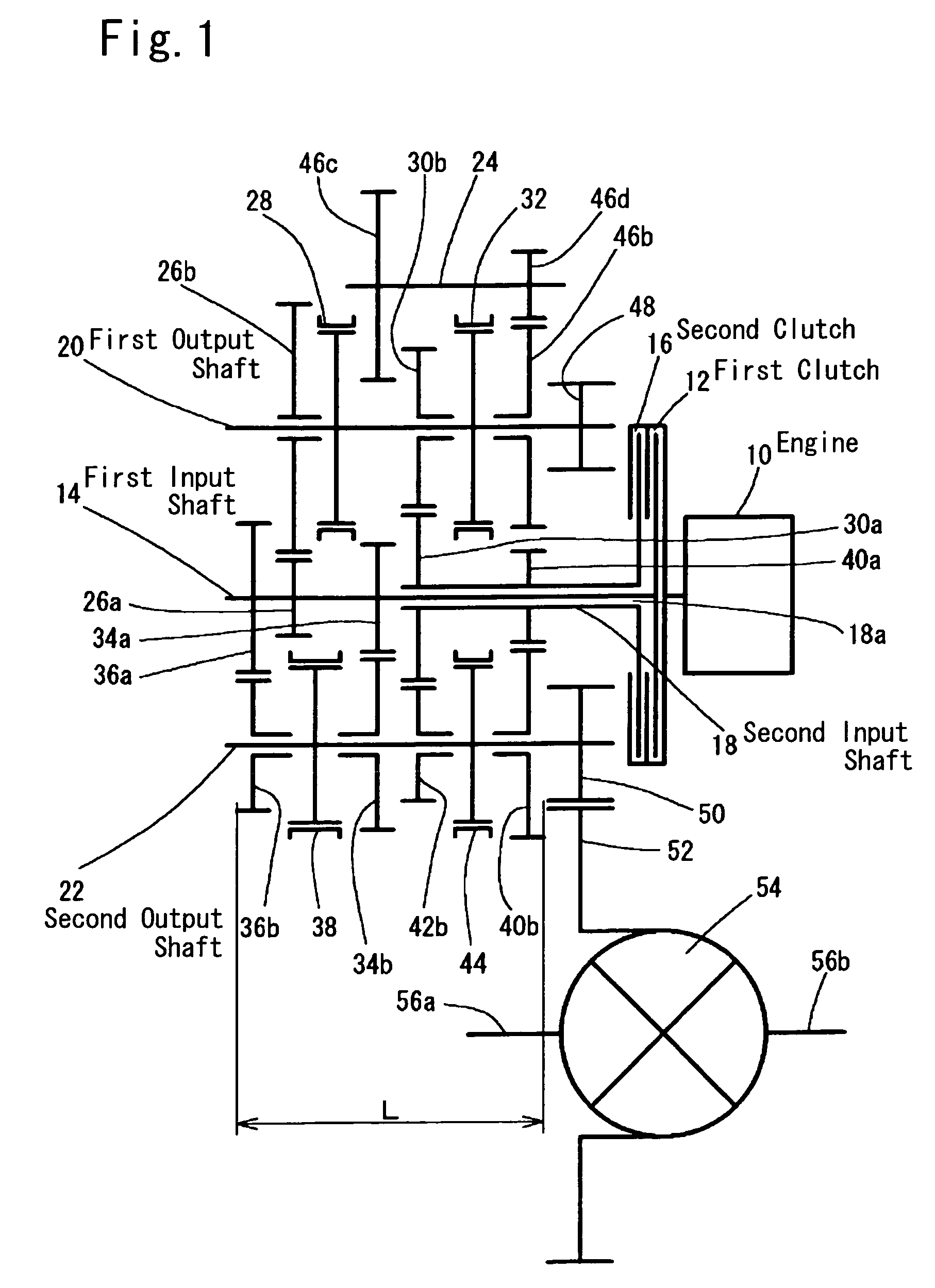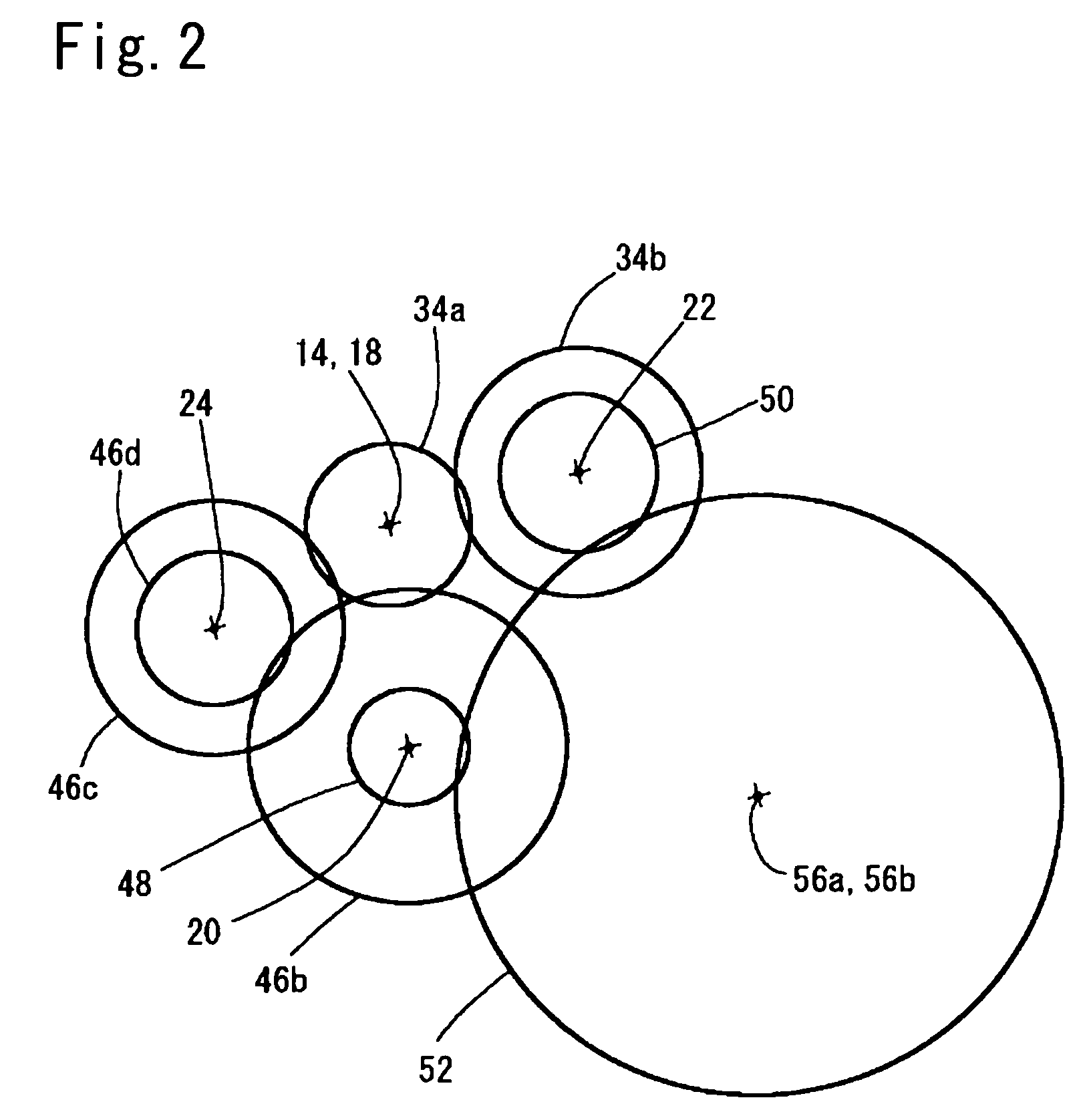Twin-clutch transmission
a transmission and twin-clutch technology, applied in mechanical actuated clutches, brake systems, gearing, etc., can solve the problems of inability to achieve satisfactory acceleration performance and fuel economy, automobile cannot be reliably parked on a sloping road, and cannot achieve reliable stopping.
- Summary
- Abstract
- Description
- Claims
- Application Information
AI Technical Summary
Benefits of technology
Problems solved by technology
Method used
Image
Examples
first embodiment
[0032]FIG. 1 is a skeleton diagram showing essential parts of a twin-clutch transmission according to the present invention.
[0033]FIG. 1 shows a state in which the transmission with shafts thereof arranged as shown in FIG. 2 is spread out on a plane.
[0034]It should be noted that FIG. 2 shows the arrangement of the shafts as viewed from the left side in FIG. 1.
[0035]Power from an engine 10 can be transmitted in parallel to a first input shaft 14 via a first clutch 12 and to a second input shaft 18 via a second clutch 16.
[0036]The first input shaft 14 and the second input shaft 18 have a common axis, and the first input shaft 14 passes through a hole 18a of the second input shaft 18. A first output shaft 20, a second output shaft 22, and a sub shaft 24 are arranged in parallel with the first input shaft 14 and the second input shaft 18.
[0037]In FIG. 1, the distance between the first and second input shaft 14, 18 and the first output shaft 20 is set to be longer than the distance betwe...
second embodiment
[0092]Referring next to FIG. 5, a description will be given of a twin-clutch transmission according to the present invention. FIG. 5 is a skeleton diagram corresponding to FIG. 1.
[0093]Here, only parts different from those of the embodiment shown in FIG. 1 to 4 will be described; substantially the same parts are denoted by the same reference numerals, and description thereof is omitted.
[0094]The second embodiment differs from the embodiment shown in FIGS. 1 to 4 in that the transmission is a seven forward speed and one backward speed type, and the pairs of gears are arranged in a partially different way due to an increase in the number of gear speeds (gear ratios).
[0095]Specifically, the relationship in connection and arrangement of the engine 10, first clutch 12, first input shaft 14, second clutch 16, second input shaft 18, first output shaft 20, second output shaft 22, sub shaft 24, and so forth are the same as those of the embodiment shown in FIGS. 1 to 4, but the pairs of gears...
PUM
 Login to View More
Login to View More Abstract
Description
Claims
Application Information
 Login to View More
Login to View More - R&D
- Intellectual Property
- Life Sciences
- Materials
- Tech Scout
- Unparalleled Data Quality
- Higher Quality Content
- 60% Fewer Hallucinations
Browse by: Latest US Patents, China's latest patents, Technical Efficacy Thesaurus, Application Domain, Technology Topic, Popular Technical Reports.
© 2025 PatSnap. All rights reserved.Legal|Privacy policy|Modern Slavery Act Transparency Statement|Sitemap|About US| Contact US: help@patsnap.com



